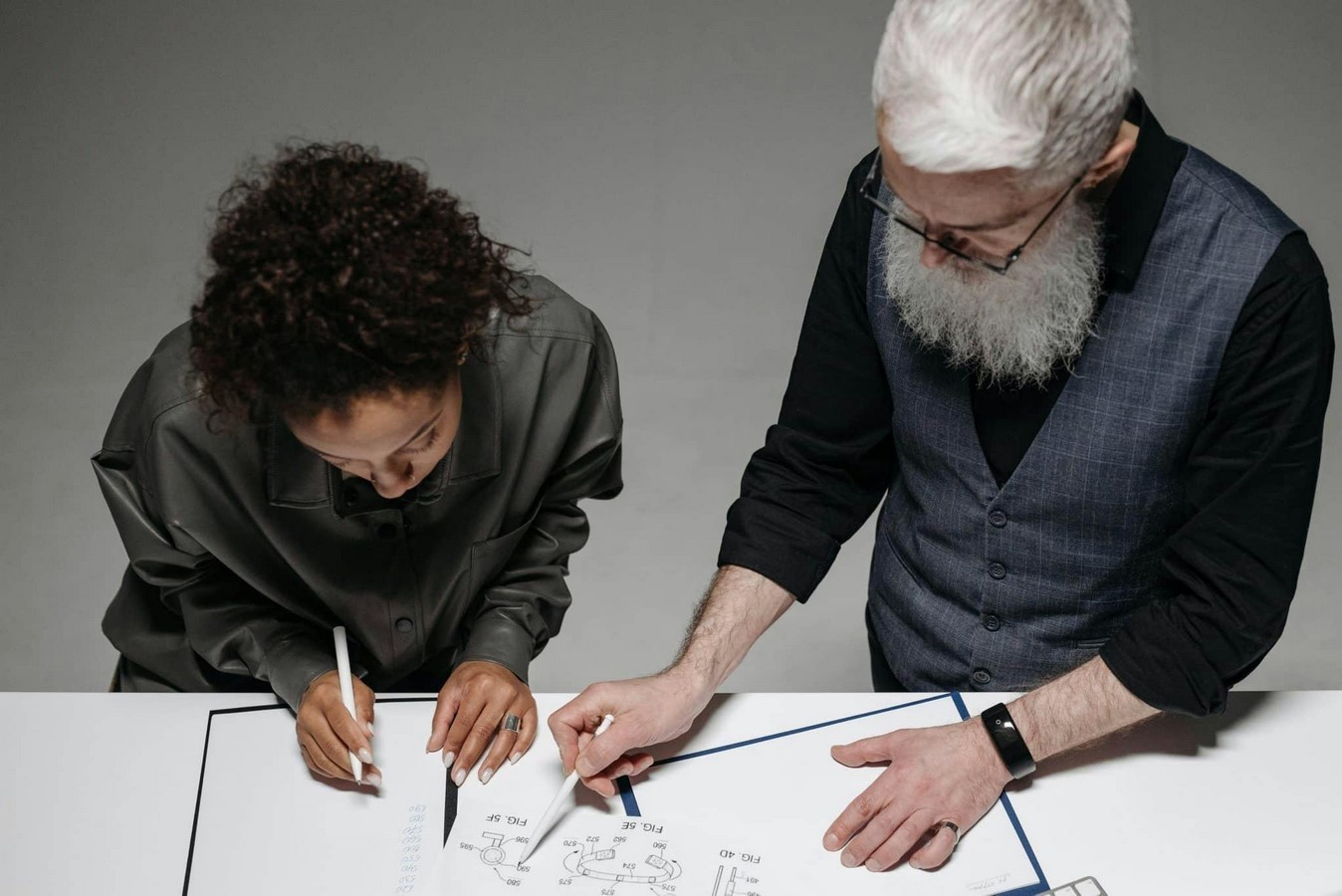Interdisciplinary collaboration is when professionals from different disciplines get together to work on the same goal. It is an expanded version of teamwork. A simple example is when a writer collaborates with a professional doctor to write a script for a movie where the main lead is a doctor. Collaborative practices aren’t new but have become more important with time. It shows how the real world works, people from different backgrounds and disciplines exist together, and just existing is not enough, it is necessary to co-exist to maintain a well-functioning society. As an architect, it is only obvious to be a master of all trades, whether it’s furniture layout, plumbing, wiring, painting, or even structural forms. Students need to experience this right in school when they are studying architecture.
Legendary architects like Frank Gehry, Frank Lloyd Wright, Robert Venturi, and many more have been known to design an entire house, from planning the structural grid to designing the door handles and cutlery for the house. This cannot be termed as a collaboration but rather a person executing work in multiple disciplines, an example of a master of all trades. Not always can a person master so many arts, and therefore it is important to bring together masters of different worlds. As much as architecture students may love to work independently and not have others impose ideas on their designs, they also need to know how helpful and favorable group work is.
Architecture students are taught about other disciplines, and they have a basic idea of what they are but there is no active collaboration during the education stage. The Bachelor of Architecture curriculum doesn’t include students working with students of other disciplines. Some competitions allow and prefer this inter-disciplinary collaboration but the college curriculum doesn’t. This involvement shouldn’t be optional considering how crucial it is for everyone, not just architecture students. Collaboration in different fields is necessary today with such big-scale projects and advanced technology helping us make innovative and supernatural structures that an architect is never enough. An architect needs an engineer to turn that drawing into reality, a designer to make the structure sustainable for the new world, an interior designer to look after the details, an urban planner to look after roads and services, a plumber, an electrician, and the list never stops, and neither does the bill.

Benefits
- Interdisciplinary collaboration in the education field purposes the comprehensive and cooperative study of students from different disciplines for a common purpose.
- It provides students with a multi-perspective way of thinking.
- This approach encourages students to work on their abilities, self-confidence, and communication skills.
- This approach provides a procreative environment and a wide information infrastructure for interaction, creativity, and innovation.
- Students learn that teamwork is necessary to produce a cohesive project.
- Studies prove that interdisciplinary efforts produce original and new ideas that are not possible in uni-disciplinary settings.
- Collaborative teams allow for new combinations of skills and hybrid disciplines, a better problem-solving toolbox, and an increased potential for innovation.
Challenges
- There is no overlap of studies between disciplines, even if some topics exist.
- As the complexity of a structure increases, so do the challenges for an architect.
- The need for multi-disciplinary efforts keeps increasing in this complex world.
- No course focuses on interdisciplinary collaboration.
- Students can’t experience this beforehand and only when they are very deep into real-world practices.
- Students are missing out on important aspects of collaborative work while in school that prepare them for the near future in their profession.
- It can be challenging to find common ground among people of different disciplines.
Awareness of cross-disciplinary methods
- The complexity of making 21st-century buildings has influenced the formation of multi-disciplinary teams to plan and build structures.
- The interdisciplinary studio: The collaboratory – Focuses on integration, collaboration, and holistic design. The idea is to expose students to an environment that promotes collaboration across disciplines. Bringing together architecture and engineering students to find collaborative solutions for a steel design competition.
- Interdisciplinary collaboration between interior architecture and industrial product design programs in Turkey.
- Collaborative Planning: Integrating Curriculum across Subjects in Schools.
Conclusion
Implementing cross-disciplinary curricula in school is going to help students widen their perspectives and enhance their skill set. They learn about other disciplines and, most importantly, engage in teamwork. Cross-disciplinary projects have been resulting in great work not just in the architecture field but also in the health department, travel department, office department, and so many more. The awareness about collaborating among fields has been increasing, and there have been approaches to implementing this in the curriculum for the students. This way, students will get hands-on experience with how it works in actual practice, and they will prepare themselves accordingly. This will also help shape them into better group members by incorporating qualities like leadership, communication, conflict resolution, active listening, integrity, and many more. This will result in better interdisciplinary teams in the future with well-educated and cultured professionals.

References:
- Science Direct: Interdisciplinary Collaboration between Interior Architecture and Industrial Product Design Programs Turkey (2013) [online] Available at – https://www.sciencedirect.com/science/article/pii/S1877042813047976?ref=pdf_download&fr=RR-2&rr=7f7100974f4a40f3
- The Interdisciplinary Design Studio (2013) [online] Available at – https://content-calpoly-edu.s3.amazonaws.com/arce/1/news-events/documents-13-14/ICSA-2013-fullpaper_collaborative-1.pdf
Image Sources:
- Image 1: Collaboratory [online] Available at – https://collaboratory.ist/wp-content/uploads/2022/07/Why-Is-Interdisciplinary-Collaboration-Important-scaled.jpg
- Image 2: Research.Life [online] Available at – https://blog.researcher.life/wp-content/uploads/2023/04/pexels-fauxels-3184396.jpg













